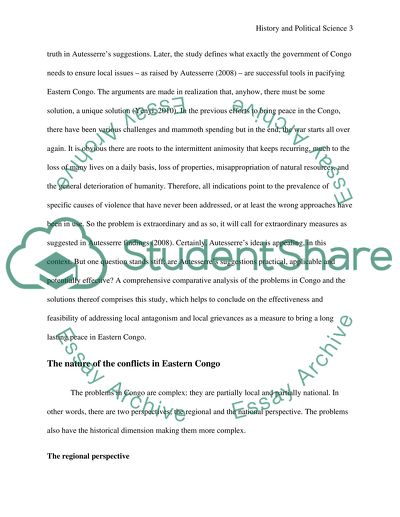Cite this document
(“Can a solution to persistent conflict in the eastern DRC be found Essay - 1”, n.d.)
Can a solution to persistent conflict in the eastern DRC be found Essay - 1. Retrieved from https://studentshare.org/history/1620736-can-a-solution-to-persistent-conflict-in-the-eastern-drc-be-found-through-addressing-local-antagonisms-and-local-grievances-as-severine-autesserre-suggests
Can a solution to persistent conflict in the eastern DRC be found Essay - 1. Retrieved from https://studentshare.org/history/1620736-can-a-solution-to-persistent-conflict-in-the-eastern-drc-be-found-through-addressing-local-antagonisms-and-local-grievances-as-severine-autesserre-suggests
(Can a Solution to Persistent Conflict in the Eastern DRC Be Found Essay - 1)
Can a Solution to Persistent Conflict in the Eastern DRC Be Found Essay - 1. https://studentshare.org/history/1620736-can-a-solution-to-persistent-conflict-in-the-eastern-drc-be-found-through-addressing-local-antagonisms-and-local-grievances-as-severine-autesserre-suggests.
Can a Solution to Persistent Conflict in the Eastern DRC Be Found Essay - 1. https://studentshare.org/history/1620736-can-a-solution-to-persistent-conflict-in-the-eastern-drc-be-found-through-addressing-local-antagonisms-and-local-grievances-as-severine-autesserre-suggests.
“Can a Solution to Persistent Conflict in the Eastern DRC Be Found Essay - 1”, n.d. https://studentshare.org/history/1620736-can-a-solution-to-persistent-conflict-in-the-eastern-drc-be-found-through-addressing-local-antagonisms-and-local-grievances-as-severine-autesserre-suggests.


